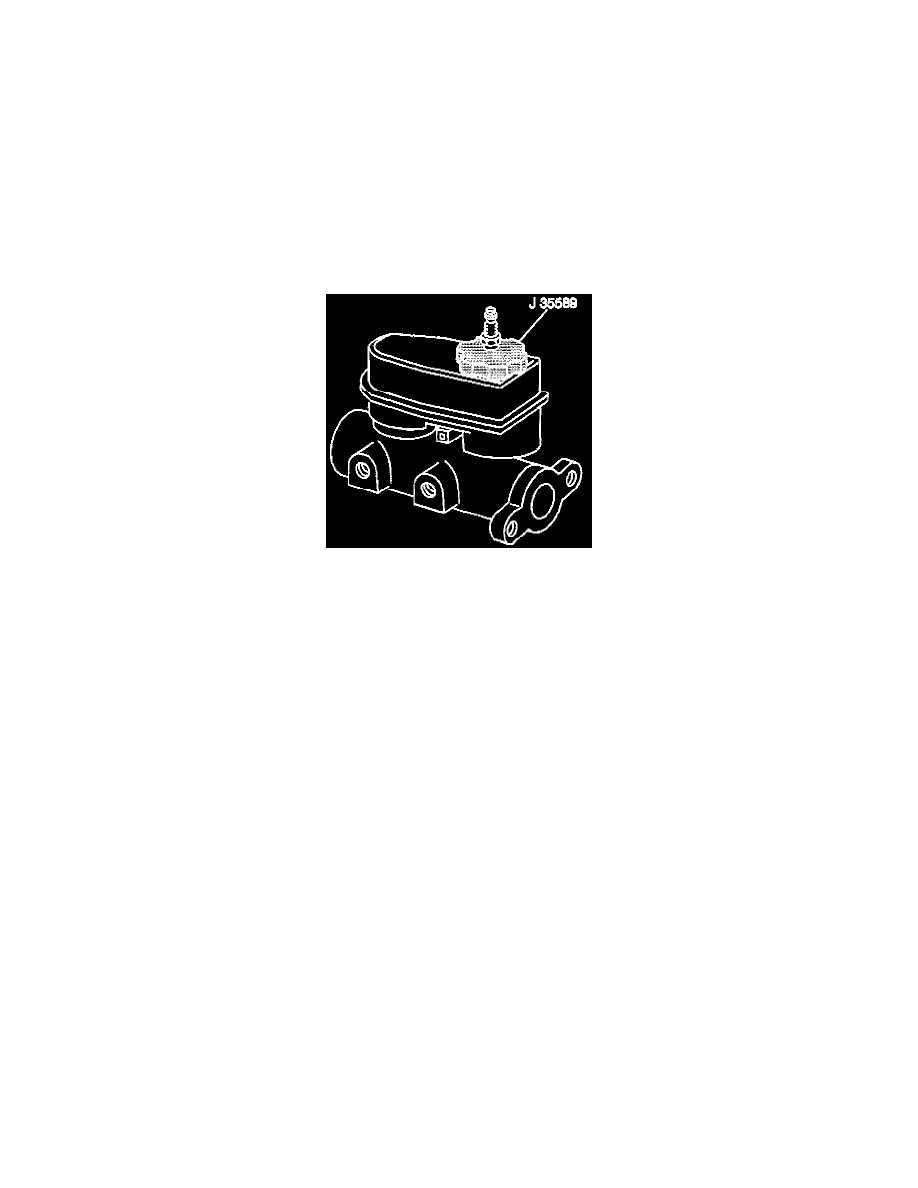Grand Prix V6-191 3.1L VIN M SFI (1998)

Brake Bleeding: Service and Repair
CAUTION:
^
Do not move the vehicle until a firm brake pedal Is obtained. Air In the brake system can cause loss of brakes with possible personal Injury.
^
Use only SUPREME 11 (GM PAN 12377967) DOT 3 brake fluid from a clean, sealed container. Do not use fluid from an open container that
may be contaminated with water. Improper or contaminated bald could result in damage to components, or loss of braking, with possible
injury.
^
Overfilling the reservoir must be avoided due to the potential for overflow onto the nearby catalytic converters in the exhaust system. Brake
flied is flammable, and contact with hot exhaust components could result in a fire and possible personal Injury.
NOTICE:
^
If any brake component is repaired or replaced such that air is allowed to enter the brake system, the entire bleeding procedure must be
followed.
^
Avoid spilling brake fluid on any of the vehicle's painted surfaces, wiring, cables, or electric connectors. Brake fluid will damage the paint and
the electrical connections. If any fluid is spilled on the vehicle, flush the area to lessen the damage.
A bleeding operation is necessary in order to remove air when air is introduced into the hydraulic brake system.
Bleed the hydraulic system at all four brakes if air has been introduced through a low fluid level or by disconnecting brake pipes at the master cylinder. If
a brake hose or brake pipe is disconnected at one wheel, bleed only that one wheel caliper. If brake pipes or hoses are disconnected at any fitting located
between the master cylinder and the brakes, then only bleed the brake system served by the disconnected pipe or hose.
Pressure Bleeding
^
TOOLS REQUIRED
-
J 29532 Diaphragm Type Brake Bleeder
-
J 35589 Compact Brake Bleeder Adapter
NOTICE: Pressure bleeding equipment must be of the diaphragm type. It must have a rubber diaphragm between the air supply and the brake fluid to
prevent air, moisture, and other contaminants from entering the hydraulic system.
1. Clean the brake fluid reservoir cover and the surrounding area.
2. Remove the brake fluid reservoir cover.
3. Inspect the brake fluid reservoir level. Add clean brake fluid as required.
4. Connect the J 35589 to the brake fluid reservoir.
5. Adjust the pressure bleed equipment to 35-70 kPa (5-10 psi).
IMPORTANT: Use a shop cloth to catch escaping brake fluid. Also, do not allow brake fluid to contact any painted surfaces as surface damage will
occur. If brake fluid does contact any surface, flush surface with water to lessen damage.
6. Bleed the brake modulator brake pipe connections at mc1 and mc2 only using pressure bleeding equipment that is connected and pressurized:
